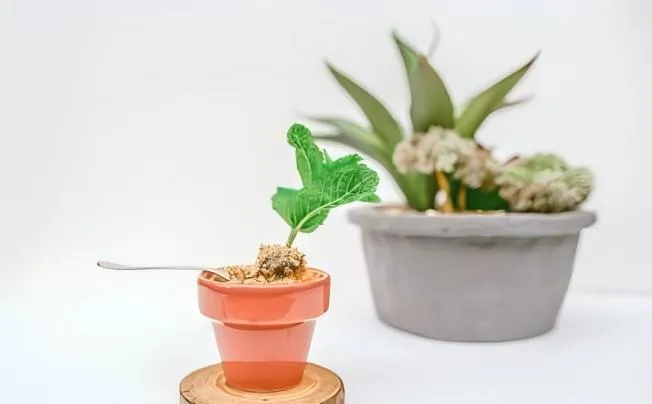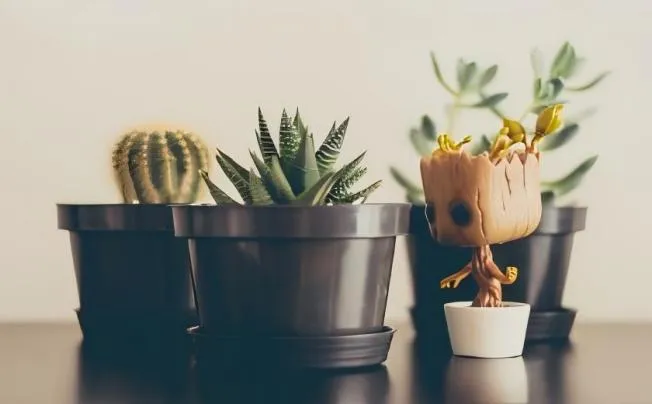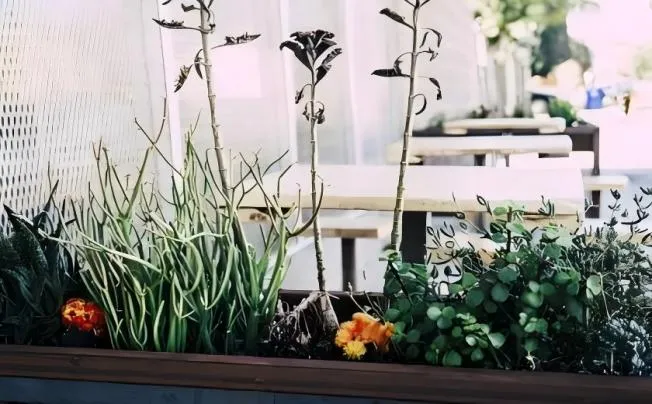Do Plants Grow Better In Plastic Or Ceramic Pots?
Plastic flower pots are a common choice in flower markets and home gardening. They have unique advantages, but also some disadvantages.
Advantages and disadvantages of plastic flower pots
Benefits of flower pots made of plastic
1. Low cost: Compared to flower pots made of other materials, plastic flower pots are more affordable due to their low material costs and comparatively straightforward production method. Plastic flower pots are a cost-effective option for large-scale flower-growing enterprises or inexperienced gardeners with tight budgets.
2. Lightweight: Due to the properties of plastic materials, it is incredibly light and portable. Plastic flower pots are easy to use and won't strain you if you need to shift flower pots frequently, like turning indoor plants into outdoor ones in the sun or moving plants about on the balcony or patio.
3. A variety of styles: Plastic is easily moulded. Flower pots of varying sizes, forms, and colours can be produced using different moulds and production techniques to satisfy the aesthetic preferences of different customers. Plastic flower pots come in a wide variety of styles, from straightforward and contemporary solid-colored flower pots to adorable cartoon flower pots and flower pots that mimic the texture of other materials. These flower pots can give your house or garden a distinctive artistic impression.
The drawbacks of flower pots made of plastic
1. Poor air permeability: Plastic has a low air permeability and is a somewhat closed material, making it difficult for air to circulate and exchange in soil. This will cause the soil's oxygen level to drop, which will impact plant roots' ability to breathe and impede their ability to grow. Using plastic flower pots may raise the danger of root rot for certain plants, such orchids and succulents, that need high air permeability.
2. Inadequate durability: After prolonged exposure to sunshine or temperature fluctuations, plastic flower pots are susceptible to ageing, brittleness, cracking, deformation, etc. The service life of plastic flower pots will be greatly reduced after prolonged exposure to sun and rain, especially in outdoor settings, necessitating frequent replacements, which raises the expense of use and time.

Advantages and disadvantages of ceramic flower pots
Benefits of Ceramic Flower Pots
1. Beautiful and exquisite: Ceramic flower pots are crafted with fine craftsmanship and can be painted with a variety of beautiful patterns and colours. Classical-style flowers, birds, fish, and insects, as well as contemporary plain geometric designs, can all be beautifully displayed with ceramic skill. Because of their beautiful designs, ceramic flower pots are more than just a way to hold plants; they are also works of art that may give a home or patio a powerful artistic and cultural feel.
2. Good water retention and air permeability: Ceramic flower pots have some water retention and air permeability when compared to plastic flower pots. In addition to providing the oxygen required for plant roots and allowing the soil's air to circulate gently, it can also keep the soil moist, preventing moisture loss too quickly and fostering a comparatively stable growing environment for plants. Ceramic flower pots are a wonderful option for plants like camellias and azaleas that have a fairly balanced need for air and water.
Ceramic flower pots have the following drawbacks:
1. Expensive: The production process for ceramic flower pots is intricate and requires a number of steps, including blank making, painting, fire, and other procedures. Additionally, the raw materials must meet strict quality standards. These elements contribute to its comparatively high price. Because ceramic flower pots of the same quality and specifications might cost several times as much as plastic ones, some buyers with tight budgets choose not to purchase them.
2. Brittle ceramic substance makes it easy to break. It is prone to breaking and damage if it is inadvertently bumped while being transported or moved. Certain ceramic flower pots, especially those with intricate designs and thin walls, are more prone to breakage and external forces, so users must take extra caution when using them on a daily basis, which raises the risk and inconvenience of usage.

Maintenance points and techniques
1. Watering frequency: Due to their poor air permeability and relatively strong water retention, plastic flower pots should not have too frequent waterings. In general, you should water them every three to five days in the spring and autumn; in the summer, when temperatures are high and water evaporates quickly, you can water them every one to two days, but be careful not to water them at noon to prevent scorching the roots of the plants; and in the winter, when plants grow more slowly and require
2. Cleaning technique: Cleaning plastic flower pots is not that difficult. When the growing season is finished, remove the plants from the pots, empty the remaining soil, give the pots a good washing, and brush off any dirt or debris that may have accumulated on the surface. You can use dishwashing liquid or another mild detergent, wipe with a moist cloth, and then rinse with clean water to get rid of any stubborn stains. Rinse the cleaned plastic flower pots well with clean water, dry them completely, and lay them away after soaking them in a 10% bleach solution for ten to fifteen minutes to stop the formation of germs.
Important guidelines for caring for ceramic flower pots
1. Frequency of watering: Although ceramic flower pots retain water and allow air to pass through, they shouldn't be overwatered. Water once every two to three days in the spring and autumn, once every morning and evening in the summer to keep the soil damp but not soggy, and once a week in the winter. In order to prevent water buildup, be sure to water properly and slowly. Azaleas in ceramic flower pots, for instance, should be watered according to the "no watering if not dry, and watering thoroughly if watering" approach to guarantee the moisture needed for growth.
2. Cleaning technique: To get rid of dust and stains from ceramic flower pots, wipe the surface with a moist cloth once a day. To bring back the ceramic flower pot's natural shine, use a small amount of toothpaste and wipe it off with a moist towel several times. It is preferable to use toothpaste that contains frosted particles. In order to thoroughly eliminate filth and odour from the flower pot, deep clean it every so often by combining white vinegar and water in a 1:1 ratio, putting the mixture into the flower pot, soaking it for ten to fifteen minutes, and then rinsing it with clean water. It should be mentioned that in order to prevent scratches, you should not clean the ceramic surface with harsh items. At the same time, you should not immediately apply acidic materials or detergents to the ceramic flower pot's surface in order to prevent corrosion.

Selected Blogs
-
What customization services are available for metalworking customization?
2024-12-12
-
What Is The Difference Between A Plant Container And A Raised Bed?
2024-04-23
-
Garden Screening & Fence Panels
2024-04-23
-
Gardening pot selection tips
2024-04-17
-
The function and collocation of horticultural fire pot
2024-04-17


